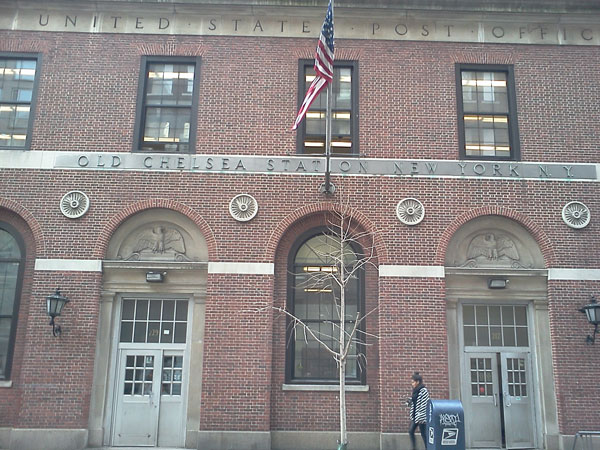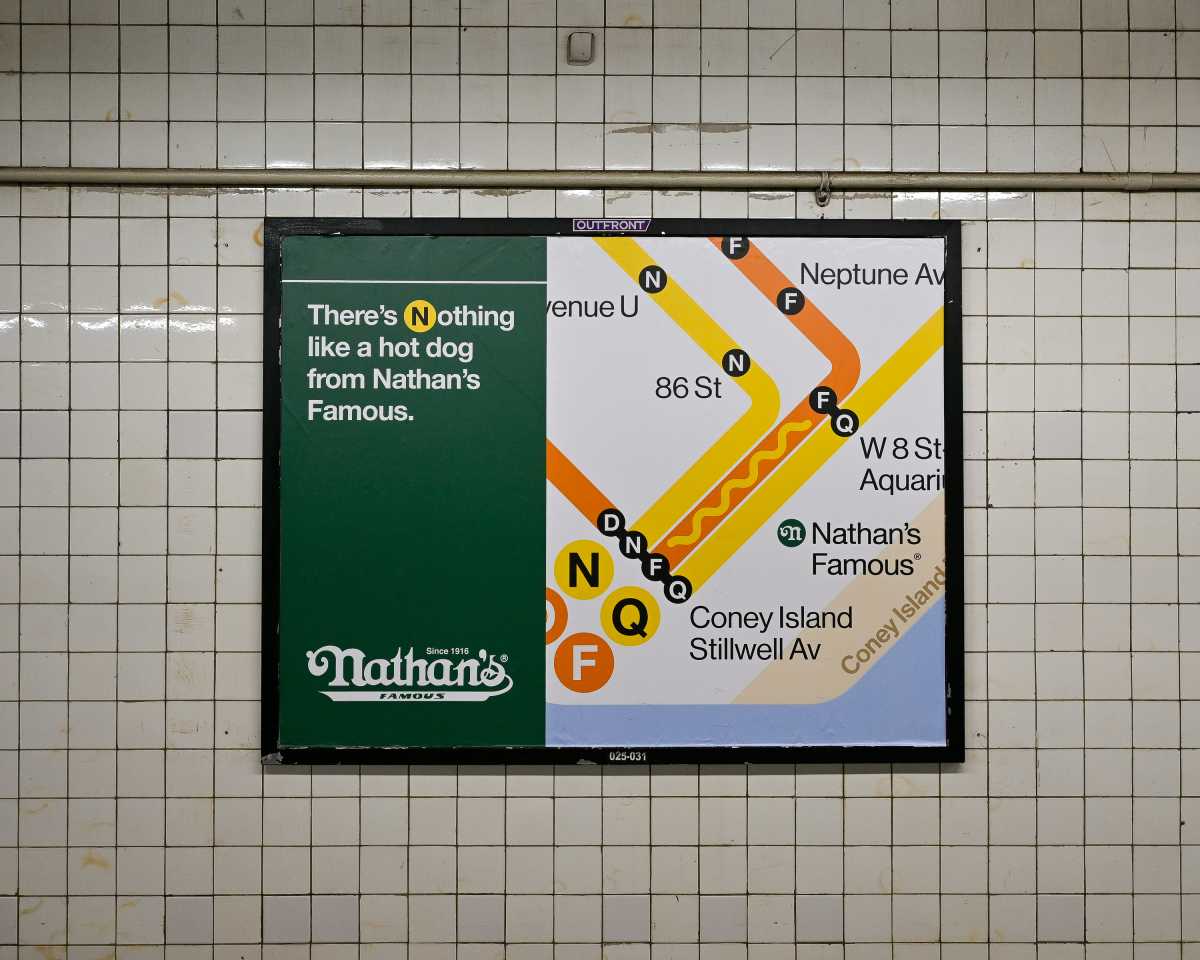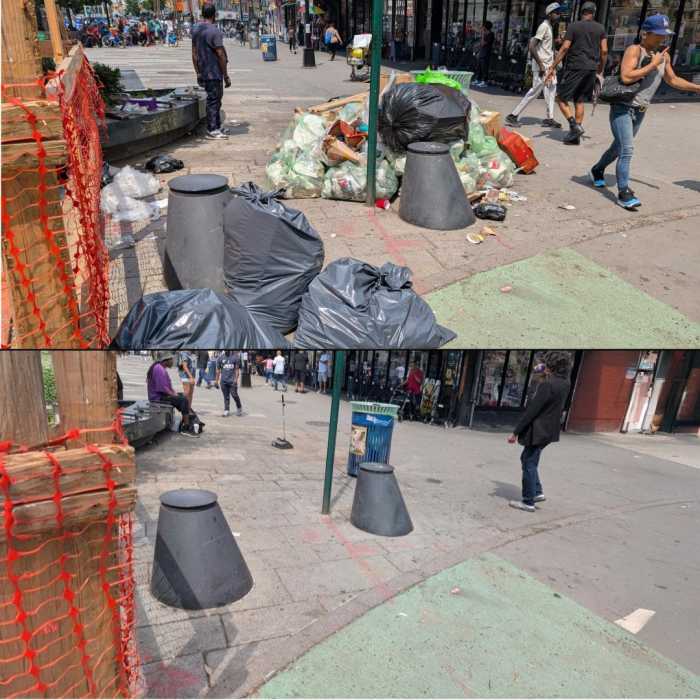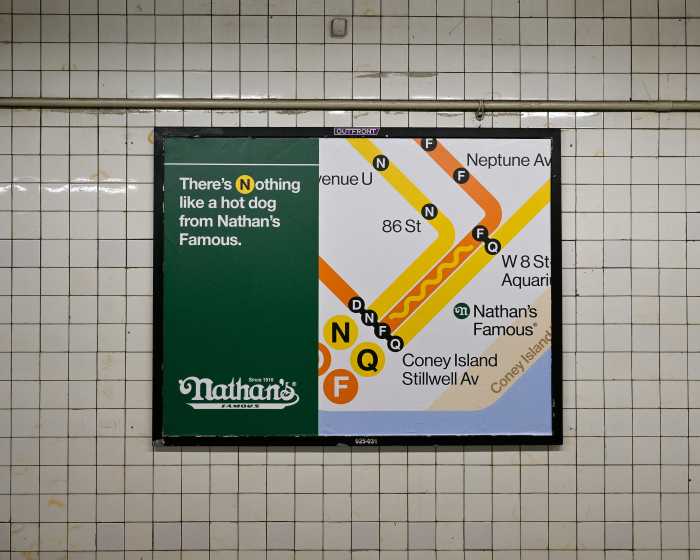
BY SCOTT STIFFLER | Having learned late in the day that their room was double-booked, Community Board 4 (CB4) scrambled to find a nearby space able to accommodate its full membership as well as an expectedly robust contingent set to weigh in on a matter that, like the meeting’s hastily arranged new location, caught many by surprise.
On the early evening of February 6, CB4 reps stood outside the New York Hotel Trades Council (305 West 44th Street) long enough to direct early birds and stragglers one block over — to 310 West 43rd Street. There, 1199 SEIU United Healthcare Workers East hosted CB4’s monthly Public Meeting.
Scheduled for 6:30pm but delayed to accommodate those coming from the event’s original location, CB4 Chair Corey Johnson called the meeting to order just before 6:50pm.
Venues in flux would be a theme throughout the night — in the form of a unique affordable housing opportunity, proposed Madison Square Garden signage and the sale of Old Chelsea Station Post Office.
Before the figurative gavel fell on the board’s 28-item agenda, two representatives from The Park Clinton presented information on the application process for affordable housing ownership.
“The project is 80% complete and we expect to be ready for occupancy by the summer,” they said of construction on the 535 West 52nd Street cooperative building.
Located one block from Hudson River Park, the website for Manhattan’s first affordable home ownership building touts “well-appointed one-bedroom and two-bedroom apartments” with amenities including “a landscaped rear garden, a fully-equipped fitness center, part-time attended lobby, 40-year tax abatement as well as bicycle storage.”
The building, its one-page website notes, “offers everything you want from owning a new apartment in Manhattan — but never thought you could afford.”
City residents with incomes ranging from $34,148 to $167,505 will be eligible for a chance at purchasing one of the 95 units made available through the 80/20 Program of the New York City Housing Development Corporation. Half of those units will be set aside for those currently living within CB4’s borders.
To help navigate the application process, two seminars are scheduled. The first will take place at Roosevelt Hospital (1000 10th Avenue, at 59th Street) on March 12, from 6-8pm — and the other, on March 28, from 6:30-8pm, at Fulton Auditorium (119 Ninth Avenue, between 17th & 18th Streets). Those who register at theparkclinton.com will be notified when the marketing period begins. The housing lottery will be held in mid-May.
PUBLIC SESSION
Dolores Freedman spoke as a representative of High Water Women (a nonprofit, volunteer-driven organization that empowers women and youth in need). She encouraged participation in Financial Literacy classes for low-income youth ages 13 to 21, to be held at the Columbus branch of the New York Public Library. Students will learn how to manage money responsibly and lay the groundwork for a more secure financial future. Upon completion of these four free classes, they’ll receive a $25 gift certificate. For more info, call 212-634-7365 or visit highwaterwomen.org.
Lenore Friedlaender, Assistant to the President of 32BJ Service Employees International Union (SEIU), asked CB4 to be aware that they are in communication with some workers throughout the city who are employed by TF Cornerstone — a commercial real estate developer and property management company which plans to develop a piece of land at 57th Street and 11th Avenue. Cornerstone “is not living up to standards in the way other responsible developers do. We want to raise awareness before they come to you again” regarding this, and other, properties. For more info, visit seiu.org.
John Wells, a member of Local 32BJ, also spoke on behalf of workers urging Cornerstone to participate in the Thomas Shortman Training Fund (TSTF). Offered to SEIU members through funding by (as they describe it) “responsible building owners, managers and employers in New York,” Wells said he’s currently enrolled in TSTF electricity classes, and had recently became CPR-certified through another TSTF program.
Clarissa Jones-Winter, an associate director of the New York State Nurses Association (nysna.org), thanked CB4 for helping in their efforts to bring attention to how St. Luke’s moved its Detox Unit (at the campus on Amsterdam Ave. & 110th Street) — using October’s natural disaster as an excuse to temporarily, then permanently, transfer services to Roosevelt Hospital (1000 Tenth Avenue, at 59th Street).
Referencing how the hospital cited a post-Sandy influx of patients and staff from elsewhere (necessitating the creation of more space), Jones said, “It’s outrageous that the hospital would use Sandy [as a reason for making the transfer permanent] instead of going through the Certificate of Need [CON] process required by the Department of Health.” The CON program is a review process, mandated under state law, which governs the establishment, ownership, construction, renovation and change in service of specific types of health care facilities.
Jones-Winter concluded by acknowledging that the board followed through on a promise made during the previous month’s meeting. “CB4 was generous to say they’d write a letter,” Jones noted. “Thanks for doing it.” Written by CB4’s Housing, Health & Human Services Committee (HH&HS), the aforementioned letter was passed by the full board as Agenda Item 12 — and will be sent to Roosevelt Hospital.
During a February 19 phone interview with Chelsea Now, Jones-Winter emphasized the need for greater transparency and accountability [“CON gives everyone the right to weigh in”], while detailing the main concerns shared by her organization and CB4. The transfer, she said, “was done without going through the normal processes, and done during a fragile time. These two populations [detox, from St. Luke’s and rehab, from Roosevelt] are, she noted, both fundamentally incompatible. Those in detox, Jones-Winter explained, “have been brought in because they’re current substance abusers — and in rehab, they’ve been started on a path of recovery. To put in someone who is still in the clutches of a strong addiction, and has been pulled in to dry out, with someone still very vulnerable to those pulls” is, Jones-Winter said, “extremely irresponsible.”
While merging the programs is not illegal, she said that the New York State Nurses Association feels the hospital acted as it did, “for their own convenience…We in the medical industry talk about census [patient numbers]. Both of these programs had very low numbers. Regardless of that fact, they should be separate.”
To access CB4’s letter, visit nyc.gov/mcb4. From the home page, click on the Calendars Agendas and Committee Schedules icon (left sidebar), then Board Letters part 2, then scroll down to Item #12.
ELECTEDS & REPS REPORT
Newly minted State Senator Brad Hoylman said that (other than the commute), “The biggest transition for me is the food,” then noted that during his short time in Albany, “the legislature enacted the toughest gun laws in the country.” More work is to be done, Hoylman said, on the issue of munitions detection. “We want to pass a microstamping bill,” he noted, referring to a tracking method that would embed information about a gun onto the bullet it fires. Hoylman also expressed solidarity with those in the mental health community. “I share their concern,” he said, adding that “legislation may have the unintended consequence of revealing a person’s medical condition.”
Hoylman introduced native New Yorker Ellen Louis as “my new legislative aid and liaison to CB4,” adding that former liaison Lauren Morrison remains his Chief of Staff. “Such a cheap applause line,” Hoylman admitted, as he made his exit while basking in…cheap applause. Louis can be reached at 212-633-8052 or at ellen@bradhoylman.com.
David Czyzyk, representing the office of Borough President Scott Stringer (mbpo.org), reported that the BP came out with an initiative asking the MTA to look into recent fatalities, and explore safety precautions already in use in other systems worldwide. Czyzyk also spoke, in detail, about “Led Astray” — a report detailing potential ways of reforming the Animal Care & Control Agency (AC&C). Copies of the January 2013 report were made available at a table near the meeting room’s entrance (where the public could also take a variety of information from groups and electeds who spoke throughout the night). The report’s summary asserted that the AC&C — a nonprofit corporation that runs the largest animal shelter system in the Northeast — is “in dire need of repair,” and falling short on its mission to rescue, care for and find homes for the city’s homeless and abandoned animals.
Since 1995, AC&C has been under contract with the NYC Department of Health and Mental Hygiene (DOHMH). “The root of the problem is structural,” Stringer’s report said, noting that DOHMH’s administration and oversight authority leaves “little room for AC&C to question DOHMH priorities and decisions.”
During the Agenda Item period, board member Delores Rubin noted that the animal welfare “affects CB4, and this is the beginning of the conversation.” She was joined by several other board members who voiced support for the “Led Astray” recommendations — in particular, more stability in top administrative staffing, a substantial increase in revenue by aggressively promoting dog licensing compliance and the restructuring of the AC&C into an independent agency that is no longer under the thumb of DOHMH (instead, functioning as a nonprofit modeled after the Central Park Conservancy). Item #11 was then passed — a letter to the Borough President supporting “Led Astray,” that CB4 Chair Corey Johnson will bring to the Borough Board (an all-borough gathering of reps from various community boards).
Representing Assemblymember Linda Rosenthal, Paul Sawyer said that her office has moved from 230 West 72nd Street to 250 Broadway (at Chambers Street) — then noted that Assemblymember Rosenthal “is working in the legislature to reform the NYCHA Board structure.”
Melanie La Rocca and CB4 liaison Harriet Sedgwick, from City Council Speaker Christine Quinn’s Office, referenced an incident in Chelsea that made citywide headlines during Hurricane Sandy. The collapsed facade of a building at 92 Eighth Avenue (between 14th & 15th Streets) did not, they said, “go unnoticed” by the Speaker’s Office. “The folks from the building looked like tourists,” they recalled, “but the building is a residential building. It was clear as day that this is an illegal hotel…they’re taking critical housing away from us.” The Office of Special Enforcement is doing an investigation.
Edgar Yu, of Manhattan District Attorney Cyrus R. Vance, Jr.’s Office, encouraged the public to access their electronic newsletter “which highlights activities and initiatives, and includes a pin map of noteworthy causes.” To sign up for the newsletter, visit manhattanda.org.
Yu made reference to an incident earlier in the day at 41st Street & Ninth Avenue, in which a pedestrian was killed. “An arrest has been made,” he said of the driver, “and we are pursuing hit and run prosecution” as well as, a board member noted, vehicular manslaughter charges. In the board’s New Business section, it was agreed they would send a letter to the Department of Transportation (DOT) asking that right turns at that dangerous intersection be eliminated. “My staff member witnessed this,” said board member Joe Restuccia, “and is traumatized. This woman [the victim] just wanted to cross the street.” Johnson expressed hope that “the DOT will make these changes quickly.”
For Matt Betts of John Liu’s Office (comptroller.nyc.gov), this was his first time at a CB4 meeting. He gave 212-669-8776 as a number at which he could be reached, and touted the Liu’s launch of Checkbook NYC 2.0 (checkbooknyc.com) which, Bitts said, “has vastly increased the transparency of NYC government” by building on the original Checkbook NYC site (launched in 2010 to help taxpayers view and track how New York City government spends its nearly $70 billion annual budget).
Representatives from the offices of Congressman Jerrold Nadler, State Senator Pedro Espada, Jr. and Congresswoman Carolyn Maloney also spoke, as did Councilmember Gail Brewer — who noted, “The Mayor just signed my Underlying Conditions Bill,” which requires building owners to do proper repairs, as opposed to patch job fixes. “The owner has to fix the roof,” she cited as an example, “or the city puts a lien on [the property].”
MSG SIGNAGE A STICKING POINT IN PERMIT RENEWAL REQUEST
Agenda Item #23, a letter to the Department of City Planning (DCP) regarding an application by Madison Square Garden (MSG), passed with amendments based on issues brought up during a lengthy discussion. To continue at its present location atop Penn Station, noted Chelsea Land Use Committee Co-Chair J. Lee Compton, “MSG needs a special permit. It has had one since the 1960s, which just expired.”
At the request of Community Board 5 (CB5), the board agreed to take a look at the matter and advise them. Although Compton urged his colleagues to recommend a 50-year lease identical to the last one (“I like 50, because it is rooted in precedent”), he also emphasized that debate surrounding the application process should “be reasonable to Madison Square Garden while being sensitive to Penn Station construction. We need to put [in our letter, a recommendation that] if there are attempts to improve Penn Station, no permit granted to MSG would interfere with that.”
“We should be somewhere between perpetuity and 50 years,” Restuccia advised regarding the shelf life of any new permit issued. “Madison Square Garden has moved four times.”
“This is MSG,” Compton responded. “They’re not going anywhere” — although he did acknowledge that, “CB5 believes MSG can be induced to leave. No one on this side of Eighth Avenue does.”
Anticipating a scenario where MSG has a long-term presence in the neighborhood, talk turned to what Compton identified as “the single most horrid thing in this proposal…They want to change the plaza and the signage to make the [Eighth Avenue] entrance to Penn Station more visible.”
These proposed signs, Compton noted, “bump out from the circle, by the escalator, 12 to 80 feet above ground. They want LED [light emitting diode] signs, with moving images.” Referencing the visual debacle that has been visited upon the 42nd Street bus terminal, Compton warned that the MSG plans are “akin to what they did at Port Authority. It’s bringing Times Square here,” he said, with other board members expressing concern that such massive, moving signage would reflect on the Eighth Avenue Post Office windows directly across the street from MSG.
“Farley is a landmark,” said one board member, wondering, “Wouldn’t LPC [the Landmarks, Preservation Commission] get this, because of the light pollution issue? “No,” said Compton, because the request for larger signage “is not an alteration to the building.” Still, Restuccia maintained, the proposed changes “would be more appropriate on the Seventh Avenue side [which is more commercial], but not on Eighth Avenue.”
By phone on February 15, CB4 District Manager Robert J. Benfatto, Jr. told Chelsea Now that he expected Compton to deliver a first draft of the board’s letter during the following week — and shortly after that, it would be sent to DCP. Once they issue their recommendation, the Borough President has 30 days to weigh in, then City Planning has 60 days. A final verdict by the City Council would be due 50 days after City Planning’s recommendation.
PUBLIC ISSUES STAMP OF DISAPPROVAL, ON SALE OF OLD CHELSEA STATION
Multiple members of the public, as well as the board, spoke regarding a fast-moving story that continues to develop as Chelsea Now went to press — the possible sale of Old Chelsea Station Post Office, and its relocation to another space in the neighborhood.
Located at 217 West 18 Street (between Seventh and Eighth Avenues), the two-story, red brick, limestone-trimmed, Colonial Revival-style structure (which first opened its doors in 1937) is one of 29 Depression-era post offices in New York City. On the National Register of Historic Places, but not a New York City Landmark, local residents were caught by surprise recently when a letter appeared in the much-loved building’s lobby that seemed to hint that its days were numbered.
“Our understanding is, they do plan to sell it,” said Benfatto in a February 15 phone conversation confirming facts that came to light during the February 6 meeting. “The notice,” he said referencing that lobby letter which has since been taken down, “wasn’t the official notice. They do have to have some sort of public meeting” before authorizing sale of Old Chelsea Station. The letter that hung in the lobby, Benfatto pointed out, “was a Section 106 Notice,” regarding its status as a historic building slated to be transferred from federal ownership.
A broad coalition of community groups and elected are involved in trying to have the United States Postal Service (USPS) halt plans to sell the building and move its services elsewhere in Chelsea. Copies of a strongly-worded letter sent to Postmaster General Pat Donahoe were made available at February 6’s CB4 meeting. Co-signed by Nadler, Maloney, Hoylman, Quinn, Stringer and Assemblymembers Deborah Glick and Richard Gottfried, it expresses “concern over USPS’s lack of internal clarity on the sale of Old Chelsea Station,” and urges that the process of public comment on sale and relocation “begin as soon as possible.”
CB4, which had drafted its own letter to the Postmaster General (which would be cc’d to the local branch and all the abovementioned electeds), did end up approving an amended version of the letter. “It seems a little tepid to me,” said board member Hugh Weinberg. “It’s not angry enough.” By the end of the discussion, Johnson assured all gathered that before the letter is stamped, “We’ll change it to be a little more indignant, and we’ll work with our elected officials” as the matter develops.
Chelsea Now will continue to follow this story in our March 6 issue and beyond.
The Old Chelsea Station section of this article included elements of Liza Béar’s reporting, which first appeared in our sister publication The Villager (February 7: “Community going postal over Chelsea P.O. sale threat”). That article can be accessed by visiting thevillager.com.




































